The pink sky is bright, causing the camera to "squint," so the exposure must be manually increased to keep the Great Egret from being darkly shadowed:
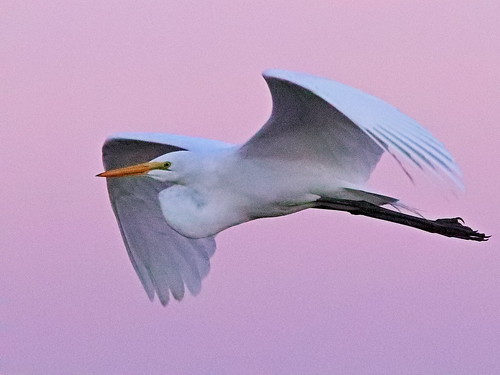
The blue water is darker, and the camera tries to compensate by increasing the exposure. This tendency must be reigned in to keep from over-exposing the white bird:
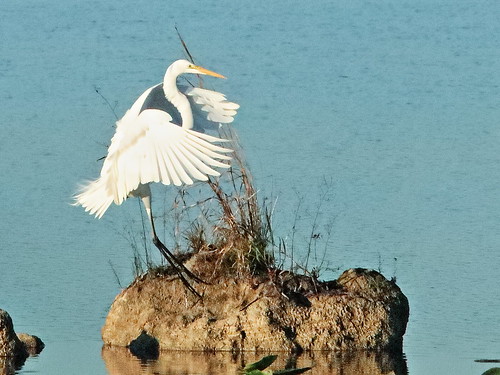
With small birds perched in the foliage, the camera tends to take care of all this automatically. I usually just set the aperture as wide as possible, to isolate the subject from distracting objects in the background. Birds in groups or in flight are not as accommodating, so the aperture must be narrowed to allow a greater depth of sharp focus, as was necessary with these White Ibises:
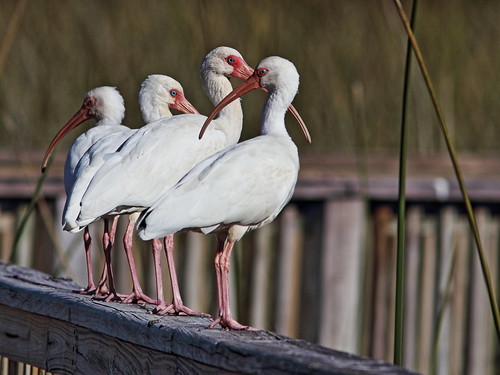
A dark and a white bird against the morning sky-- a Little Blue Heron had a close encounter with a Great Egret:
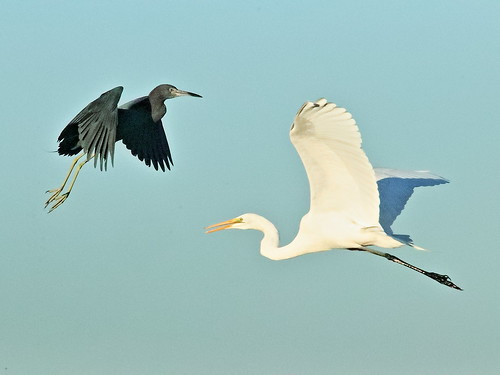
Black birds in flight are particularly troublesome, as their plumage provides little contrast to show off their feather patterns. Reflected sunshine and pure luck allowed me this shot of a Double-crested Cormorant:
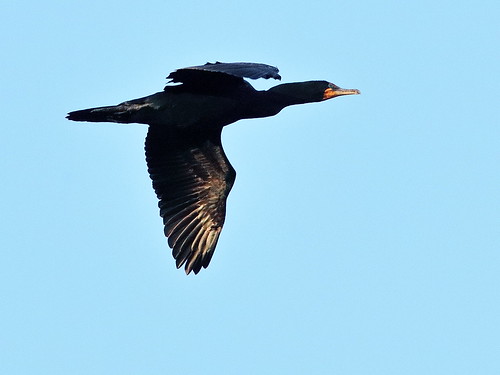
A Red-winged Blackbird puffed up his feathers to catch the light:
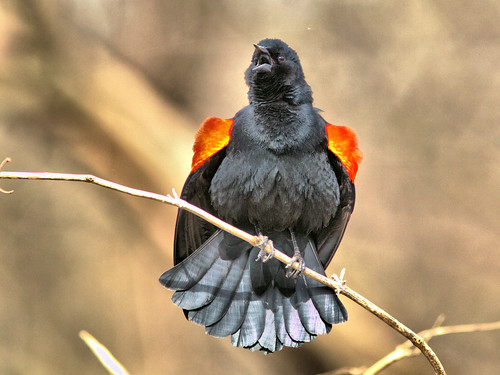
Direct sunlight reveals the iridescence of a Common Grackle...
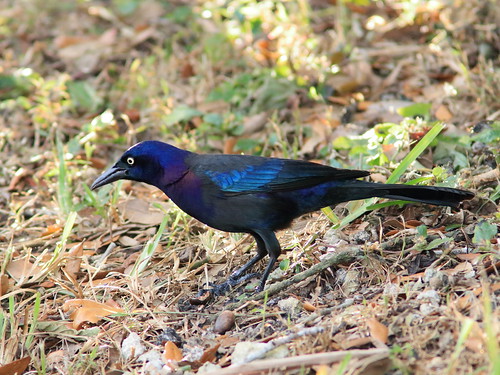
...and a Boat-tailed Grackle:
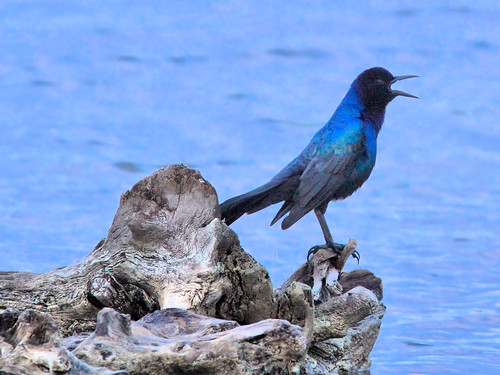
White birds sometimes show up best when they are illuminated from the side or even slightly from behind:
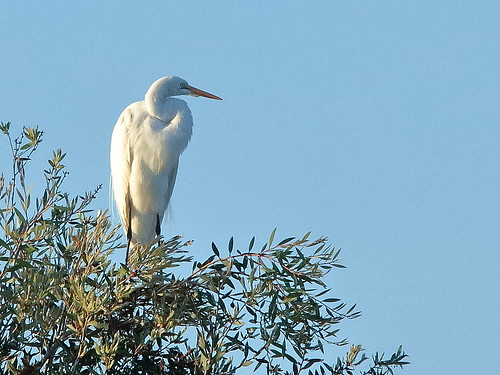
The sky has presented some interesting sights this month. Since we walk out into the wetlands in pre-dawn darkness, we are aware of the movements of celestial objects-- the Moon, planets and bright stars.
Lately we have watched Venus move towards the eastern horizon. On the morning of January 2, the waning crescent Moon was aligned with Venus and Jupiter.
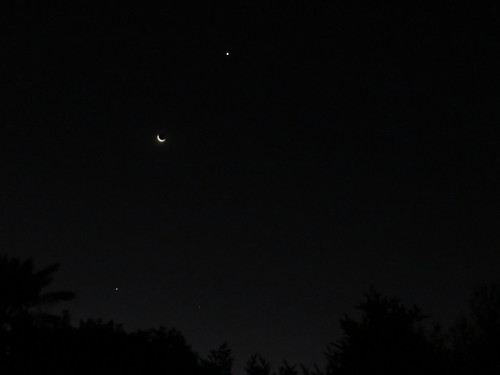
Both planets brightened up as they moved away behind the sun, appearing to move closer together. Actually, the distance between them is never less than 365 million miles. Venus is much closer to the sun and moves along its 422.5 million mile orbit at 78,337 mph (35.02 km/second). Jupiter moves more slowly, at 29,236 mph (13.07 km/second), along its huge 3 billion mile orbit and takes 4331 days to circle the sun.
On January 17, they shone brightly before sunrise:
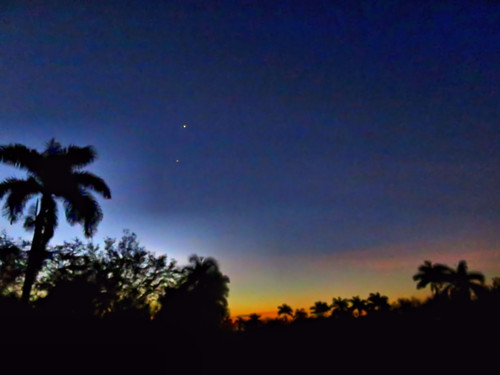
This week we witnessed a "double feature," first a full eclipse of the Moon on January 20. The Wolf Moon rose over our back yard:
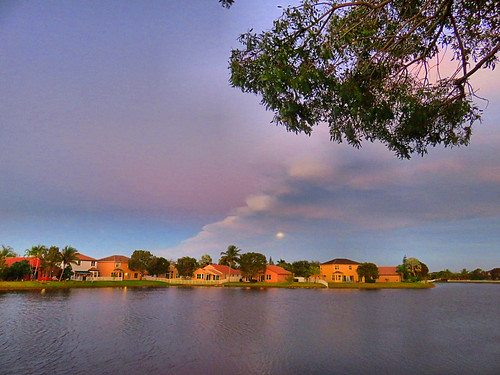
My hand-held images are not very crisp:
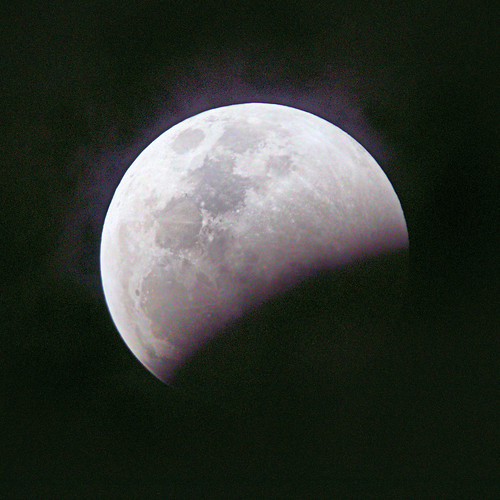
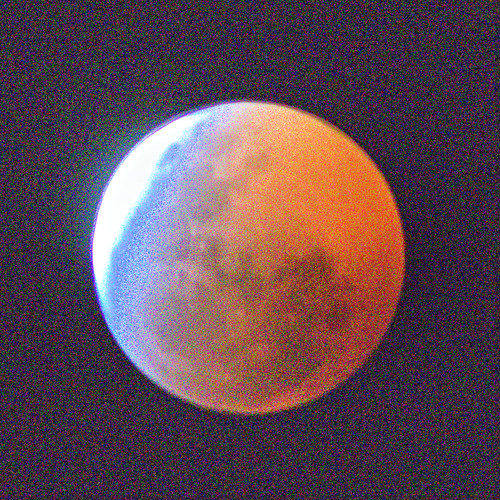
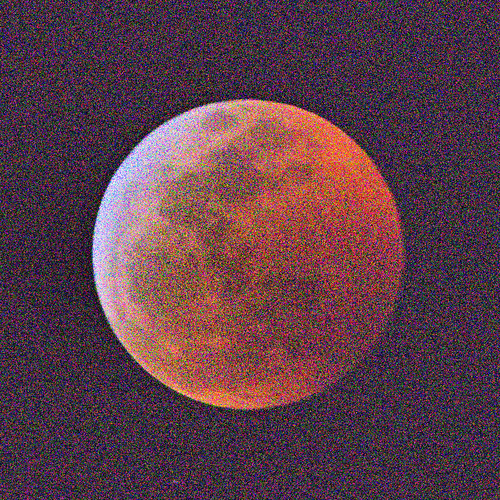
Then, stormy skies caused us to miss the conjunction of Venus and Jupiter, when they would be horizontally aligned. Their conjunction on January 22 would bring them almost 2 degrees apart, about the width of 5 full Moons. Here they were on January 21:
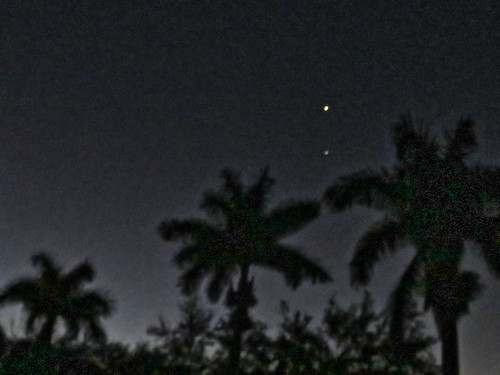
The morning after the conjunction (January 23) was also overcast, and they briefly peeked out from behind the clouds. Now Venus had moved beneath Jupiter:

= = = = = = = = = = = = = = =
Linking to Misty's CAMERA CRITTERS,
Linking to Eileen's SATURDAY'S CRITTERS,
Linking to SKYWATCH FRIDAY by Yogi, Sylvia and Sandy
Linking to WEEKEND REFLECTIONS by James
Linking to BirdD'Pot by Anni
Linking to Our World Tuesday by Lady Fi
Linking to Wild Bird Wednesday by Stewart
Linking to Wordless Wednesday (on Tuesday) by NC Sue
Linking to ALL SEASONS by Jesh
________________________________________________
Please visit the links to all these memes to see some excellent photos on display
________________________________________________
LOVE that shot of the red wing
ReplyDeleteNice pictures! What camera are you using? You can try shooting manual controlling Aperture, S Speed and ISO. If set these parameters points to the sky next time a bird flies you will get a good picture. Sutter Speed should be around 1000 or more to get sharp pics.
ReplyDeleteWell, you seem to be able to overcome the difficulties in capturing birds in flight!! Kudos! I have 'noisy' shots, too; but, don't have the more recent apps to reduce/remove it....sigh...
ReplyDeleteThat near collision between the heron and egret is an amazing photo! Really, all the in-flight photos are excellent.
ReplyDeleteYour photos are always so wonderful - gorgeous captures!
ReplyDeleteGorgeous shots of the moon and birds in flight.
ReplyDeleteWell for someone who says they have difficulty in capturing flight images you would not know it from these super photographs and I think you planet shot are great also.
ReplyDeleteWonderful set of photos. Have a good weekend, Diane
ReplyDeleteWonderful post! The photo of the heron and egret is remarkable. My picture of the wolf moon looked like a venn diagram! I gave up quickly because the temperature was well below freezing and the wind was blowing.
ReplyDeleteIn response to Frank, my usual pattern is to set out at least a half hour before sunrise and bird by ear until there is enough light for photos. I start with my custom flight photo pre-set, which is 9 center square focus points, ISO cranked up all the way to 16,000 and exposure compensation increased 1 or 2 clicks (+1/3 to + 2/3) until there is enough light in the sky to let me decrease the ISO to permit a shutter speed of around 1/1600 to 1/2400 second. If the flying bird is against a dark background, especially if the bird is white, I decrease the exposure compensation. I let the camera do the rest of the work. This setting also works for early morning birds on distant treetops. Otherwise my camera is in Aperture Priority at f/5.6 with center-point focus. I know there are other approaches and I am still in a learning mode.
ReplyDeleteHello, love your sky and moon photos. Great captures of the birds. The Little Blue Heron and Egret photo is a favorite. Love the Ibis on the railing too. All the photos are wonderful. Thank you for linking up and sharing your post. Happy Saturday, enjoy your weekend. PS, thanks also for the comment and visit to my blog.
ReplyDeleteI love the birds of course and I'm amazed at those you took 'in flight'! The sky is gorgeous too. How wonderful to live in Florida...I'm blessed to live here too! Enjoy your weekend!
ReplyDeleteIt's terrific that you shared all this with us at I'd Rather B Birdin this week...thanks.
ReplyDeleteI love the night skies! And your birds in flight...I am happy when the wind slows them down enough to get them focused in my frame. lol
Beautiful photos. I find it difficult photographing our brown deer on white snow!
ReplyDelete(ツ) from Cottage Country Ontario , ON, Canada!
P.S. I was too cold to snap the moon. I'm happy you did!
ReplyDeleteNice set of pictures - I like the heron and egret in flight. Birds in Flight are a really challenge - thank goodness for digital!
ReplyDeleteCheers - Stewart M - Melbourne
What a great collection of photos. I particularly like the birds in flight and the moon photos.
ReplyDeleteYour photos are consistently top quality! Thank you for sharing them with us at this week's linkup - http://image-in-ing.blogspot.com/2019/01/bloomin-beauty.html
ReplyDeleteStunning shots! Thanks for the info on how to get better results. I usually just do "auto mode" because I know so little. When I get an awesome shot I'm always so happy because it doesn't happen that often!
ReplyDeleteCan imagine that the white and black birds are the most difficult to capture - as well as birds in movement! Somehow you must do all the right things since your images look professional!
ReplyDeleteWe are privileged to have you on board of All Seasons, Ken! Love the first capture of the great Egret against the pink sky. The 4 Ibises look like they have a good time!
Was so disappointed we couldn't see anything of the blood moon -we had an overcast sky. Am happy to see it through your camera:)
Beautiful collection of photos
ReplyDelete